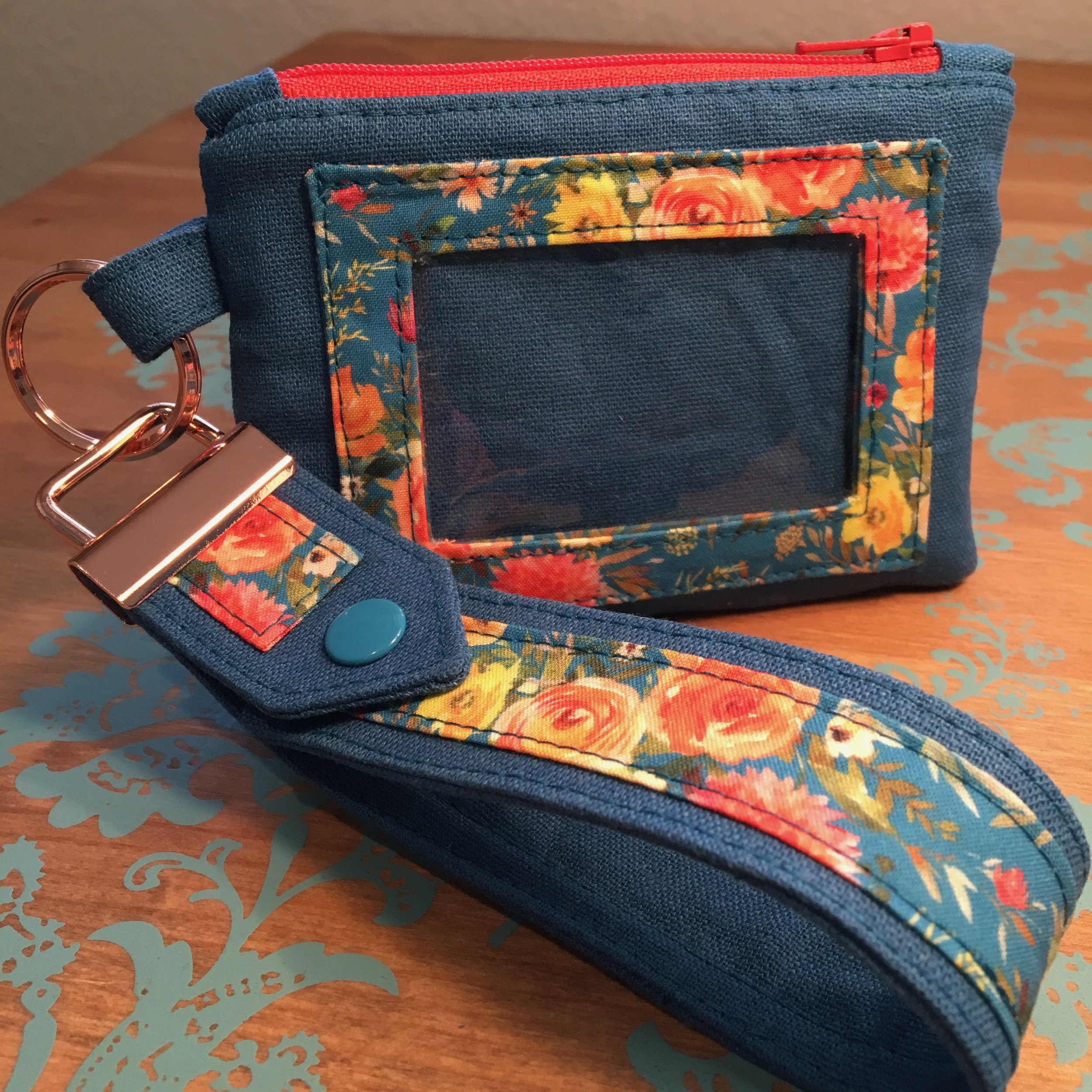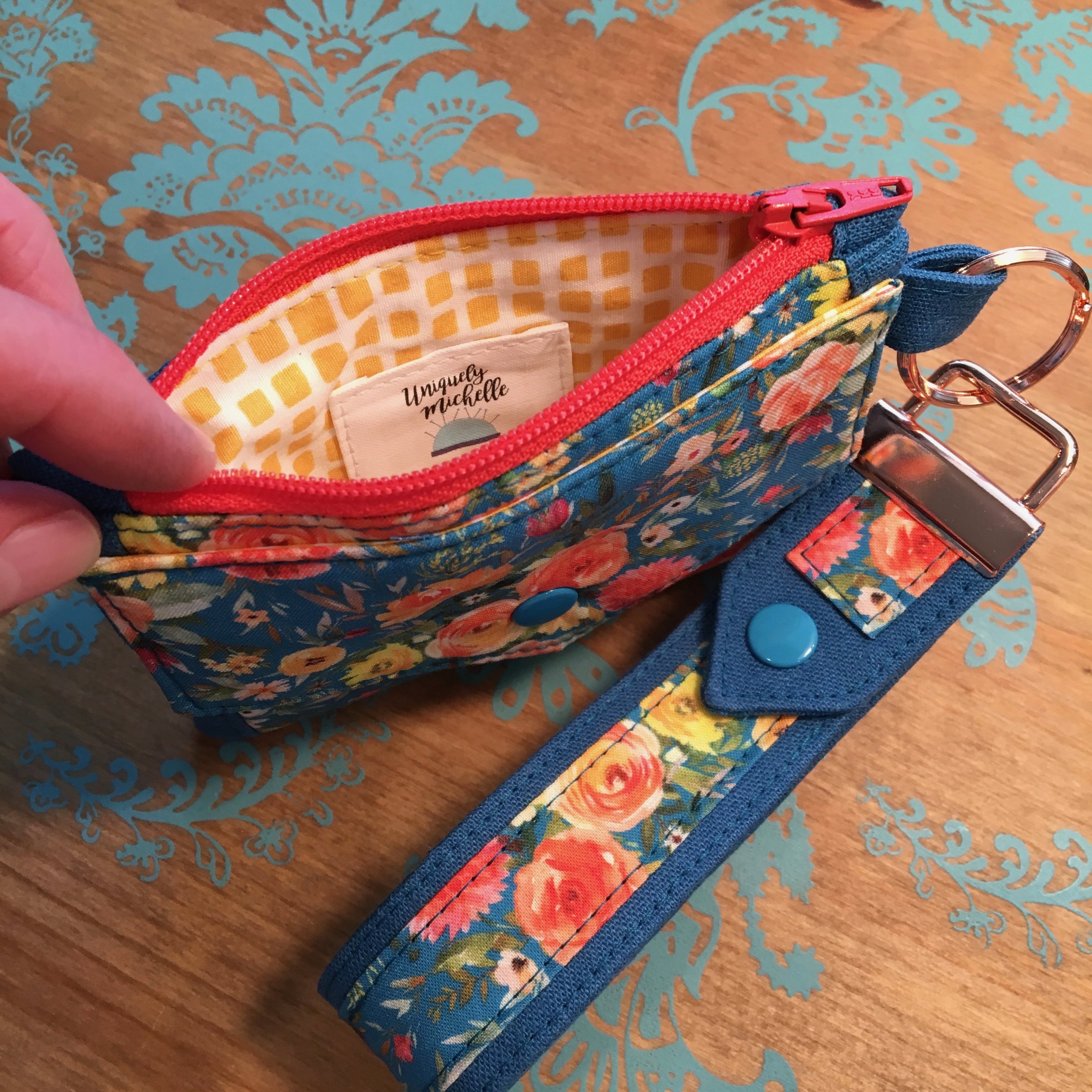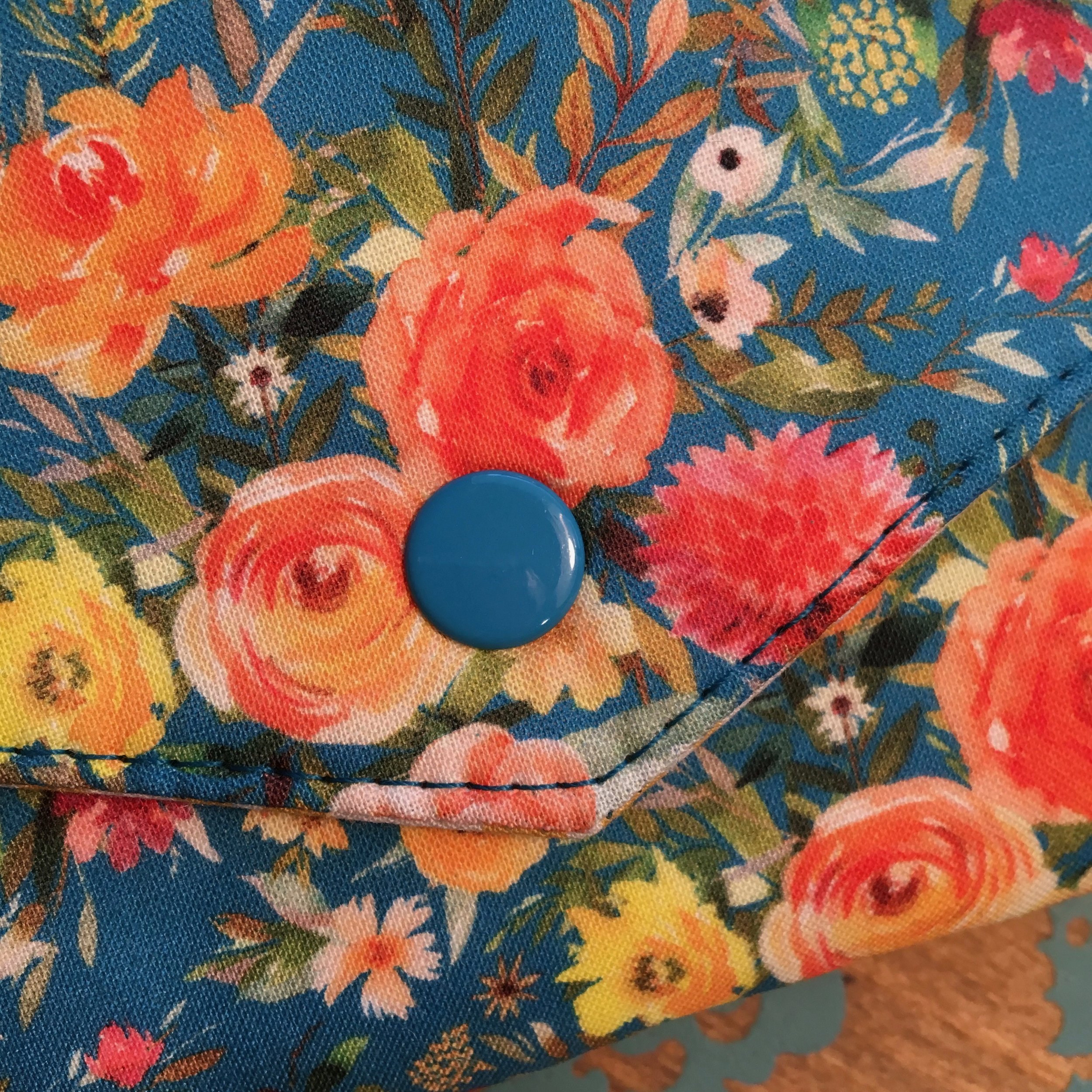The Snap To It Key Fob & The Kristine ID Wallet - A Good Pair!
Michelle Burke
As you would probably guess, I made several Snap To It Key Fobs as I was writing the Snap To It Key Fob pattern. Since the release of this free pattern, I have made a few more - they are so fun to make and fast to sew up! As I was writing the pattern, I kept thinking that the Snap To It Key Fob would make a great wristlet strap for a wallet or wristlet. I had to try it out of course, so I made a Kristine ID Wallet and matching Snap To It Key Fob.




I think it turned out so cute! I combined Essex Linen in Teal with a pretty floral called September Blooms designed by Shopcabin for Hawthorne Threads. The print comes in two sizes and I used the “little” size in the Peacock color. I then added Squared Elements in Honeycomb by Pat Bravo for Art Gallery Fabrics for the lining of the Kristine ID Wallet.
By making the exterior of the Kristine ID Wallet out of two fabrics, I hoped to accent the floral fabric and make it coordinate with the Snap To It Key Fob even more. I really like how the blue linen makes the floral fabric take center stage!
Those snaps are turquoise SnapSource metal snaps, I love the way they look with the fabrics. I also love the copper-colored hardware I used for this Snap To It Key Fob. I got this pretty 1¼” rose gold/copper finish key fob hardware from Bagmaker Supply.
I think the Snap To It Key Fob and the Kristine ID Wallet make a great pair, don’t you? I like that by adding a Snap To It Key Fob to the Kristine ID Wallet, you can snap your Kristine ID Wallet to a grocery cart, baby stroller or strap of a purse, making it very convenient.
If you don’t have the Kristine ID Wallet pattern you can purchase it from the Uniquely Michelle Craftsy Pattern Shop, the Uniquely Michelle Website Shop or the Uniquely Michelle Etsy Shop. The Snap To It Key Fob pattern is a free pattern that can be found in the Uniquely Michelle Website Shop.
Make sure to keep up with all the latest happenings at Uniquely Michelle by signing up for our email newsletter below!

















